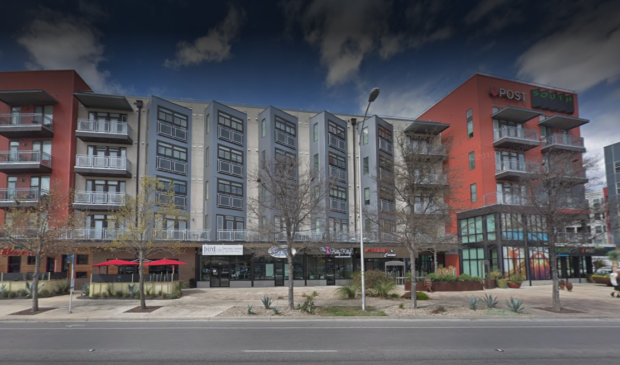Commission pushes for increased height, reduced compatibility ahead of code rewrite
Friday, July 26, 2019 by
Ryan Thornton The Planning Commission voted Tuesday to initiate a code amendment that would increase the building height limit from 60 to 85 feet at properties located within a transit-oriented development or zoned as vertical mixed-use. For good measure, the amendment would also waive all restrictions based on compatibility standards for any transit-oriented development or vertical mixed-use sites that are adjacent to activity centers per the Imagine Austin Comprehensive Plan or along the Austin Strategic Mobility Plan’s Transportation Priority Network.
Commissioner Greg Anderson said the proposed amendment is simple enough that it should be possible for city staff to make the edits even as the Land Development Code is being updated.
“For seven years I’ve been hearing, we’ll just put that in the new Land Development Code; and meanwhile, we continue to see building after building … built at 60 feet,” Anderson said. “This is just an opportunity to sit down behind a computer for an hour and make a couple of changes to our code that could then go to Codes and Ordinances, go through that public process and come back to us, and then, if we so choose to pass that, could then go on to City Council.”
Given the choice, Anderson said, most developers of vertical mixed-use and transit-oriented properties would happily build above the 60-foot cutoff. According to him, that would be a good thing: Allowing up to 85 feet – approximately seven stories – would alleviate the housing crisis, secure more income-restricted units, increase the city’s tax base, and help support public transit.
“There’s nothing transit-inducive about 60 feet,” he added.
In addition to height limits, development is also controlled by compatibility standards, regulations that aim to preserve urban character by making sure adjacent buildings fit well together, both in function and scale.
To ensure that developers could take full advantage of entitlements, Commissioner Conor Kenny added an amendment that would waive such compatibility requirements for vertical mixed-use or transit-oriented development properties that are adjacent to transit corridors or Imagine Austin centers. As Kenny mentioned, significantly reducing compatibility standards along corridors is consistent with the direction Council gave for the new code.
Neither amendment is a new idea. Commissioner Patricia Seeger noted that the proposal is essentially “two of the 11 recommendations that (Neighborhood Housing and Community Development) sent to Council in March” to explore a similar code change. The difference here, and the purpose, according to Anderson, is to keep it as easy as possible for staff.
“The single biggest goal here is to not throw a lot of work at staff,” Anderson said.
However, with city staff preparing to publish the first draft of the new code Oct. 4, Planning and Zoning Director Jerry Rusthoven said the timing is awkward. By the time the amendment was circulated and ready to go to Council, the commission would already have the new development code draft to consider and make any necessary recommendations, he said.
“As a secondary matter,” Rusthoven added, “the entire staff that I have that works on code amendments … are working on the code rewrite, so at this time I don’t have somebody that could do it.”
Commissioners were largely sympathetic to the time constraints of city staff, but Commissioner Awais Azhar cited the urgent need, particularly in transit-oriented developments, to adjust height restrictions as one way to encourage more affordable housing supply.
“We are hearing that we are losing some affordable units and I think that is of concern,” Azhar said. “I don’t want to wait to see whether it gets rolled into the (Land Development Code) or not.”
According to Anderson, vertical mixed-use properties are likely to be rezoned under a different category in the new code, but transit-oriented developments could carry over into the new code, remaining the same. Rusthoven said he was not sure at this point whether they would be addressed in the new code or not. In either case, he said, the commission could draft amendments to modify transit-oriented developments during the code review process.
Seeger and Commissioner Carmen Llanes-Pulido both expressed discomfort with pushing for such a broad change without a comprehensive analysis of potential impacts in place.
“I think we’re jumping the gun here a bit,” Seeger said. Without having studied the impacts, she said a better approach would be to write a letter to Council supporting the specific changes rather than attempting to modify the code.
Despite those concerns, the commission voted in favor of the code amendment 8-2, with Seeger and Llanes-Pulido opposed.
“A lot of these properties are looking at redevelopment as we speak, so the longer we wait the less yield we get out of these when it comes to the unit count, the jobs, the tax base,” Anderson said.
Image courtesy of Google maps.
The Austin Monitor’s work is made possible by donations from the community. Though our reporting covers donors from time to time, we are careful to keep business and editorial efforts separate while maintaining transparency. A complete list of donors is available here, and our code of ethics is explained here.
You're a community leader
And we’re honored you look to us for serious, in-depth news. You know a strong community needs local and dedicated watchdog reporting. We’re here for you and that won’t change. Now will you take the powerful next step and support our nonprofit news organization?










